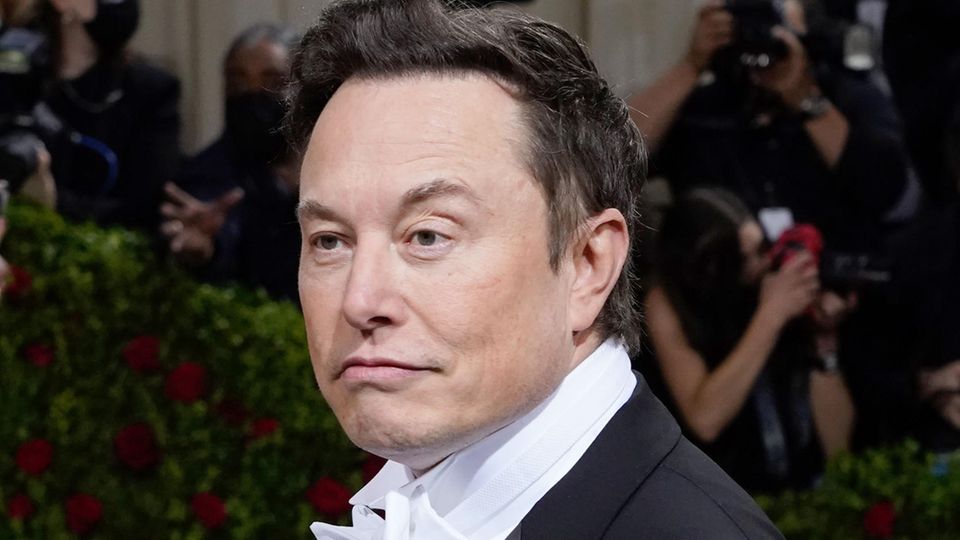“TwitterBlue”
Blue hooks for deceased celebrities – that’s how desperate Elon Musk is promoting his new Twitter subscription
Elon Musk wants to make money with “Twitter Blue”. He uses the profiles of deceased celebrities as advertising boards.
© Brendan Smialowski
Elon Musk’s campaign for his “Blue Tick” subscription “Twitter Blue” is getting out of hand: In order to drum up advertising for the new source of income, he uses, among other things, the Twitter profiles of deceased celebrities. Those who are still alive defend themselves with simple tricks.
On April 20, the blue ticks on Twitter lost all meaning. On this date, Twitter owner Elon Musk had all old profile identifiers removed and thus switched operations completely to “Twitter Blue”, his subscription model for the short message service. If you don’t shell out 9.52 euros a month (or 99.96 euros a year) in the future, you will no longer be able to enjoy a prominent profile marking.
Originally, however, the blue tick had a deeper meaning: Twitter then assigned the symbol to profiles if the accounts belonged to celebrities or public figures, for example, who were able to identify themselves as the actual owners of an account in a manual verification process. With this, Twitter was able to ensure that the abuse of big and well-known names was limited and users knew what they were up against.
With the switch to “Twitter Blue” that’s over, because you don’t need more than a monthly fee and a telephone number to get a hook. Shortly after this subscription was released, from which Elon Musk apparently hopes to compensate for lost advertising revenue, the misuse of the mark for supposedly official accounts increased, often affecting companies.
Elon Musk
Twitter is selling off its blue hooks for $8 – now “verified” fake accounts are flooding the platform
True, Twitter has profiles for well-known brands and certain, for example Nintendo or the pope, separate markings, but the majority of the badges are still made up of the blue tick. Only he has experienced an amazing reversal of function.
Bought Twitter reach is tempting
Since Twitter promises subscribers “priority in the rankings in conversations and in the search”, those users who have an increased interest in gaining more visibility for their messages pay the most. Including right-wing bloggers, cryptocurrency preachers and people like Donald Trump Junior.
But so that “Twitter Blue” does not only spread in certain camps, Twitter boss and owner Elon Musk has come up with an advertising campaign. Shortly after the old profile markings were abolished, it became clear that quite a few celebrities who had temporarily lost their way suddenly stood out from the crowd again. This was because Musk had apparently “donated” accounts with a particularly high reach, he wrote himself.
The problem: Many didn’t want that because the description of the hooks had changed. If you click on it, it says for some time: “This account is verified because it subscribed to Twitter Blue and has verified its phone number.” A statement that is so often incorrect, since many well-known faces had explicitly ruled out ever completing the subscription. Those who now involuntarily advertise “Twitter Blue” often write that they received the hook without being asked and without consultation – for example Stephen King or rapper Ice T.
Elon Musk uses profiles of deceased as advertising board
Musk’s tactic of also marking profiles as subscribers to “Twitter Blue” who can no longer defend themselves is particularly perfidious. Over the weekend, numerous dead received the new blue tick, for example Michael Jackson, Chadwick Boseman, Kirstie Alley, Pele or Kobe Bryant. The marking of the murdered Saudi Arabian journalist is particularly macabre – if one wants to speak of gradations at all Jamal Khashoggi as a paying subscriber who has “verified their phone number”.
Also completely inactive profiles, for example that of “Game of Thrones” actress Emilia Clarkewho has not posted anything on Twitter since April 30, 2013, are said to be subscribers to “Twitter Blue”.
Those who have also been blessed by an unsolicited hook but are still able to react have figured out a relatively simple trick: as soon as you change your name or profile picture, the blue symbol apparently disappears for a certain period of time so that Twitter has a chance to check changes for fraud.



